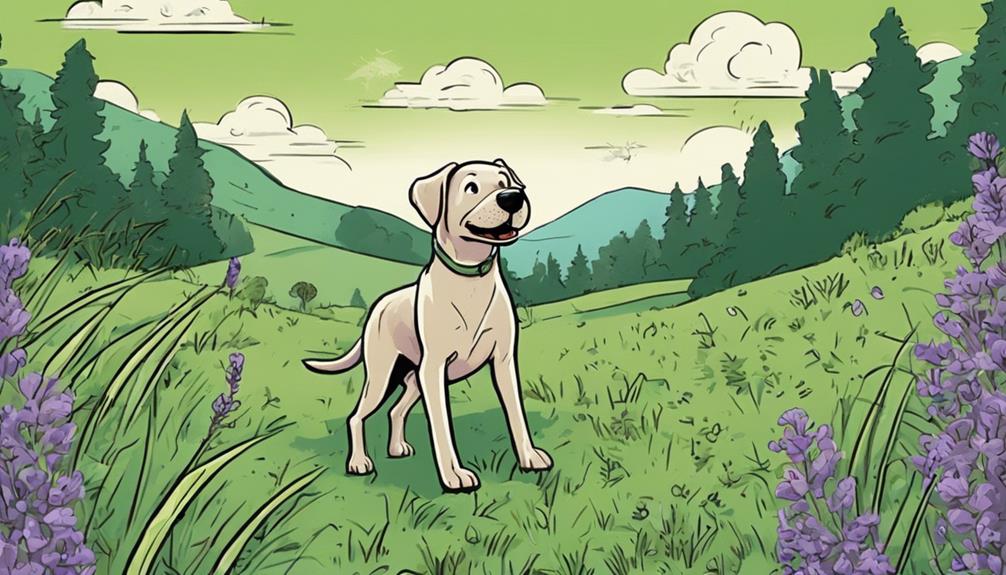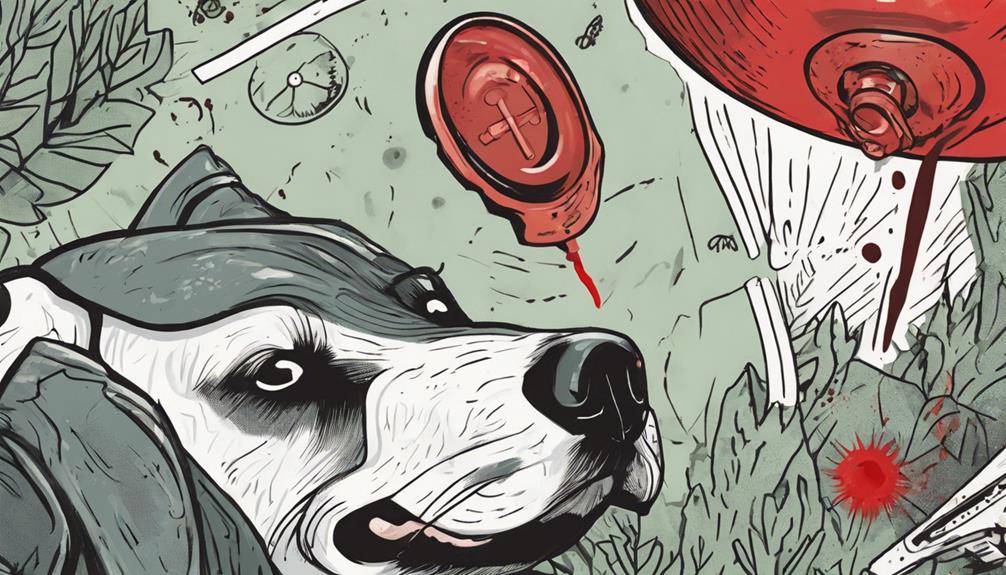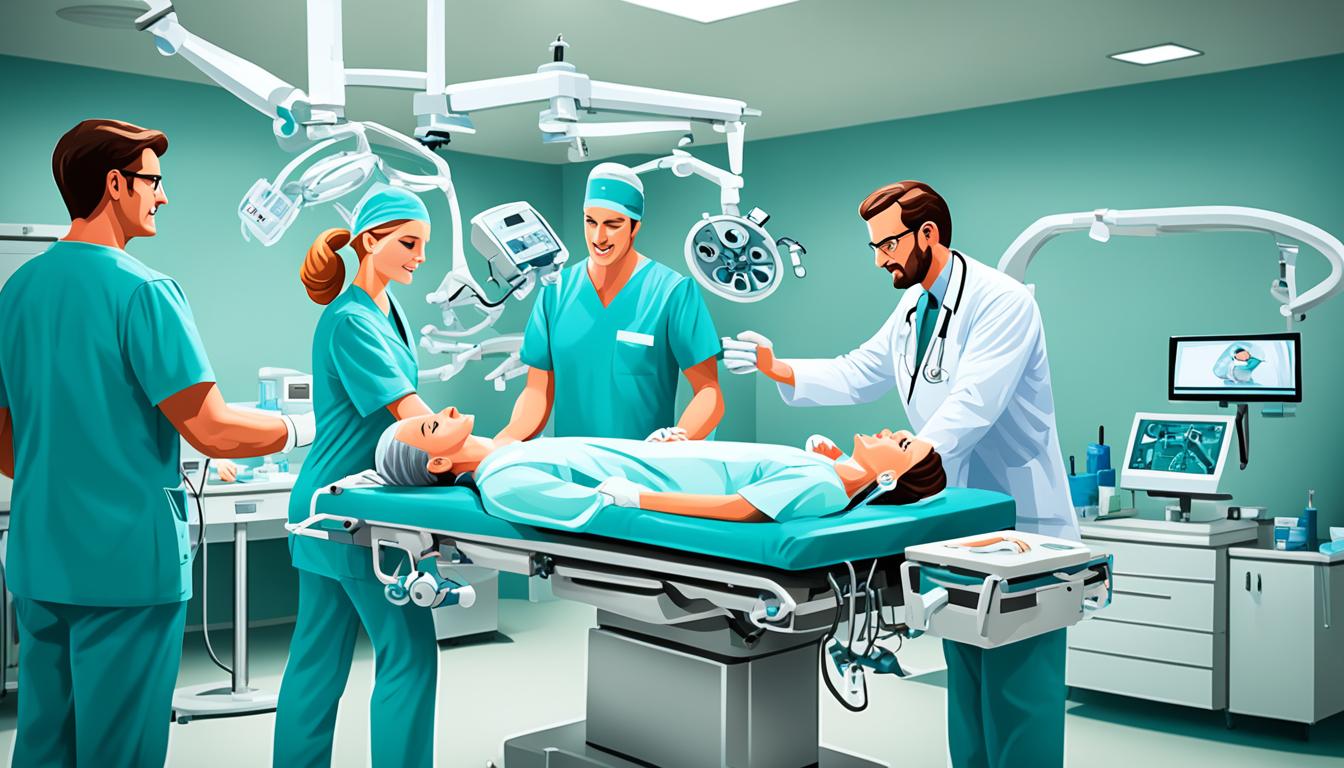To safely remove a tick from your pet, start by preparing a well-lit area with fine-tipped tweezers or a tick removal hook, gloves, antiseptic, and a sealed container. Grasp the tick close to the skin and pull upwards in one smooth motion. Clean the bite area with antiseptic and monitor for signs of infection. Dispose of the tick properly and watch for post-removal symptoms like fever, lethargy, and loss of appetite. By following these steps, you'll reduce the risk of diseases like Lyme disease, anaplasmosis, and Rocky Mountain spotted fever. Now, learn how to prevent future tick encounters and identify tick-borne diseases.
Key Takeaways
- Use fine-tipped tweezers or a tick removal hook to safely remove the tick, grasping it close to the skin.
- Pull the tick straight out with steady pressure, avoiding crushing it, and clean the bite area with antiseptic after removal.
- Prepare a well-lit area with necessary tools and a calm pet for efficient removal, ensuring a safe environment with protective gloves.
- Monitor the bite area for signs of infection, redness, swelling, or irritation, and seek veterinary advice if necessary.
- Properly dispose of the tick by flushing it down the toilet or sealing it in a bag to prevent reattachment.
Understanding the Risks of Ticks
Living in wooded or grassy areas, you're likely familiar with the pesky critters that lurk in the underbrush, waiting to latch onto your pet and transmit diseases that can be fatal if left untreated. Ticks are notorious for spreading tick-borne diseases, such as Lyme disease, anaplasmosis, and Rocky Mountain spotted fever, which can be devastating to your pet's health. These diseases can cause a range of symptoms, from fever and joint pain to more severe complications if left untreated.
As a pet owner, understanding the risks associated with ticks and taking preventative measures to minimize the transmission of diseases is crucial. Regularly checking your pet for ticks and using preventative treatments can significantly reduce the risk of tick-borne illnesses. Early detection is vital in preventing the transmission of diseases from ticks to pets.
Preparing for Tick Removal

As you prepare to remove a tick from your pet, it's important to gather essential supplies and choose the right tool for the job.
You'll want to select a fine-tipped tweezers or a tick removal hook that will allow you to grasp the tick as close to your pet's skin as possible.
Gather Essential Supplies
Before you start the tick removal process, gather the essential supplies you'll need to guarantee a safe and successful procedure. Having the right tools will make the process less stressful for you and your pet.
Here are the essential supplies you'll need:
- Fine-tipped tweezers or a tick-removal tool to safely Remove a Tick from your pet's skin
- Gloves to protect yourself during the removal process
- Pet-friendly antiseptic and disinfectant to clean the bite area
- A sealed container to dispose of the tick after removal
- A tick hook (optional) to aid in safe and efficient removal of ticks from your pet
Remember to use tweezers or a tick-removal tool to grasp the tick as close to your pet's skin as possible. This will ensure a safe and successful removal. By having these essential supplies ready, you'll be well-prepared to Remove a Tick from your pet quickly and safely.
Choose the Right Tool
When it comes to removing a tick from your pet, selecting the right tool is vital, and you'll typically reach for fine-tipped tweezers or a specialized tick removal tool. These tools are designed to remove the tick safely and effectively, reducing the risk of infection and minimizing the chances of twisting or jerking the tick during removal.
Using the right tool is essential, as it prevents squeezing the tick or leaving mouthparts behind, which can lead to infection. Fine-tipped tweezers or a tick removal tool allow you to grasp the tick as close to your pet's skin as possible, making it easier to remove the entire tick.
Make sure to confirm the tool is clean and ready for use before starting the removal process. Having the correct tool on hand can make the tick removal process quicker and less stressful for your pet.
Prepare a Safe Environment
To guarantee a smooth and safe tick removal process, prepare a well-lit area with good visibility and all necessary tools within easy reach. This will allow you to focus on the task at hand without any distractions.
Before starting, make sure you have the following essentials:
- A well-lit area with good visibility to effectively perform the tick removal process
- All necessary tools, such as fine-tipped tweezers or tick removal tools, ready and within easy reach
- Protective gloves to prevent direct contact with the tick and reduce the risk of infection
- A plan to keep your dog calm and comfortable during the removal process to minimize stress and ensure safety
- A secure position for your dog to prevent sudden movements that could complicate the tick removal procedure.
Removing the Tick Safely

Now that you're prepared to remove the tick from your pet, it's vital to focus on the safe removal process.
You'll need to choose the right tool for the job, prepare your pet for the procedure, and then carefully remove the tick.
Choose the Right Tool
Choose a fine-tipped pair of tweezers or a specialized tick removal tool to guarantee a safe and effective removal process. When it comes to removing a tick from your pet, using the right tool is essential. You'll want to select a tool that allows you to grasp the tick close to the skin, making sure that you remove the entire tick without leaving any parts behind.
Here are some key considerations when choosing the right tool for tick removal:
- Use fine-tipped tweezers or a specialized tick removal tool to ensure a safe and effective removal process
- Avoid using everyday objects like fingers or nails, as these can cause the tick to break apart and increase the risk of infection
- Opt for a tool that allows you to grasp the tick close to the skin, reducing the risk of leaving mouthparts behind
- Consider using a tool specifically designed for tick removal, as these are often designed with safety and effectiveness in mind
- Make sure to clean the tool with antiseptic after use to prevent the spread of infection
Prepare Your Pet
When preparing your pet for the safe removal of the tick, it's crucial to have a steady and gentle hand. Before you start, make sure your pet is calm and comfortable.
Make sure to grasp the tick close to the skin with your fine-tipped tweezers, being careful not to squeeze the tick's body to prevent any discomfort or stress to your pet. This will help avoid any bacteria or saliva from entering your pet's bloodstream. Once you've grasped the tick, you're ready to remove it.
After removal, clean the bite area with antiseptic to disinfect and prevent infection. Finally, remember to monitor your pet closely for any signs of illness or infection after removing the tick.
Remove the Tick
Using fine-tipped tweezers, you'll grasp the tick as close to your pet's skin as possible, pulling upwards in one smooth motion. This guarantees the tick is removed completely, reducing the risk of infection or disease transmission. Make sure to pull straight upwards, avoiding twisting or jerking the tick, which can cause mouthparts to break off and remain in your pet's skin.
For a safer and easier removal, consider using a tick removal hook specifically designed for this purpose.
After removal, take the following steps:
- Clean the bite area with antiseptic or soap and water to prevent infection.
- Store the tick in rubbing alcohol or a sealed container in case it needs to be identified later.
- Avoid crushing the tick, as this can cause it to release its saliva, increasing the risk of disease transmission.
- Wear gloves to protect yourself from potential tick-borne diseases.
- Wash your hands thoroughly after handling the tick.
Post-Removal Care and Monitoring

After safely removing a tick from your pet, you'll need to focus on post-removal care and monitoring to prevent infection and guarantee your pet's recovery.
Cleaning the bite area with antiseptic or soap and water is important to prevent infection. Monitor the removed tick bite site for any signs of redness, swelling, or irritation, as these can be indicative of infection.
If the tick's head is stuck, avoid poking or prodding the area to prevent further complications. Properly dispose of the tick by placing it in rubbing alcohol to make sure it can't reattach or spread disease.
Keep an eye out for post-removal symptoms such as fever, lethargy, or loss of appetite, and seek veterinary advice if you notice any concerning reactions in your pet. Providing post-removal care involves monitoring your pet's behavior and physical condition closely.
Preventing Future Tick Encounters

You can greatly reduce the risk of future tick encounters by taking proactive measures to protect your pet and its environment. By being proactive, you can minimize the risk of tick-borne diseases and future tick encounters.
Here are some essential steps to prevent future tick encounters:
- Regularly use tick prevention treatments like spot-on treatments or tick collars recommended by your vet.
- Conduct thorough tick checks on your pet after outdoor activities to prevent future tick encounters.
- Maintain a clean environment in your home and yard to reduce the risk of tick infestations.
- Avoid areas known to be tick-infested when walking or playing with your pet.
- Consider vaccinating your dog against tick-borne diseases to further prevent future tick encounters.
Identifying and Managing Tick-Borne Diseases

Understanding tick-borne diseases is crucial for recognizing symptoms early, as timely intervention can greatly impact treatment outcomes and your pet's quality of life. Rocky Mountain Spotted Fever (RMSF), a common tick-borne disease, has a fatality rate exceeding 30-40%. You should be aware that over 60% of RMSF cases are reported in states such as North Carolina, Tennessee, and Oklahoma. Did you know that cats can test positive for RMSF without showing signs, and ticks can hide in areas cats can't reach during grooming?
Here's a breakdown of tick-borne diseases, transmission times, and pathogens:
| Disease | Transmission Time | Pathogen |
|---|---|---|
| RMSF | 3-48 hours | _Rickettsia rickettsii_ |
| Lyme Disease | 36 hours | _Borrelia burgdorferi_ |
| Anaplasmosis | 12-24 hours | _Anaplasma phagocytophilum_ |
| Ehrlichiosis | 3-48 hours | _Ehrlichia spp._ |
| Babesiosis | 12-48 hours | _Babesia spp._ |
When managing tick-borne diseases, it's important to understand that ticks transmit pathogens through saliva during feeding due to their barbed feeding tubes and cement-like secretion. By recognizing the signs and symptoms of tick-borne diseases, you can take prompt action to protect your pet's health.
Frequently Asked Questions
How to Safely Remove a Tick From a Dog?
You're wondering how to safely remove a tick from your dog. To do so, grasp the tick close to the skin with fine-tipped tweezers, pull upwards, and clean the area afterward to prevent infection.
Can I Use Rubbing Alcohol to Get a Tick off My Dog?
"Are you really going to risk pushing the tick's saliva into your dog's skin? No! You can't use rubbing alcohol to get a tick off your dog; instead, use it to disinfect tools and clean the bite area after removal."
Will Hydrogen Peroxide Make a Tick Back Out?
You're wondering if hydrogen peroxide will make a tick back out, but unfortunately, it's not a recommended method. Hydrogen peroxide can irritate the tick, causing it to regurgitate pathogens into your pet, increasing disease transmission risks.
Do I Need to Clean My House After Finding a Tick on My Dog?
You don't need to deep clean your house after finding a tick on your dog unless you suspect an infestation; vacuuming and washing your dog's bedding should be enough to remove any stray ticks or eggs.
Conclusion
As you've now learned the ins and outs of safely removing ticks from your pet, remember that vigilance is key. One missed tick can lead to a world of trouble.
Stay alert, stay proactive, and stay informed – the battle against tick-borne diseases is ongoing, and you're your pet's best defense.









